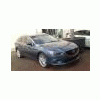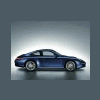Transizione ecologica ed il futuro della mobilità
-
Contenuti simili
-
- 21 risposte
- 2797 visite
-
Perché le auto elettriche (non) hanno il cambio? 1 2 3 4
Pubblicato da Gengis26,
- maserati ufficiale
- granturismo 2023
- (e 8 altri in più)
- 35 risposte
- 927 visite
-
- 166 risposte
- 27725 visite
-
-
-


















.thumb.jpg.46228d717c405acd43b45b79fddce6a4.jpg)

Messaggi Raccomandati: